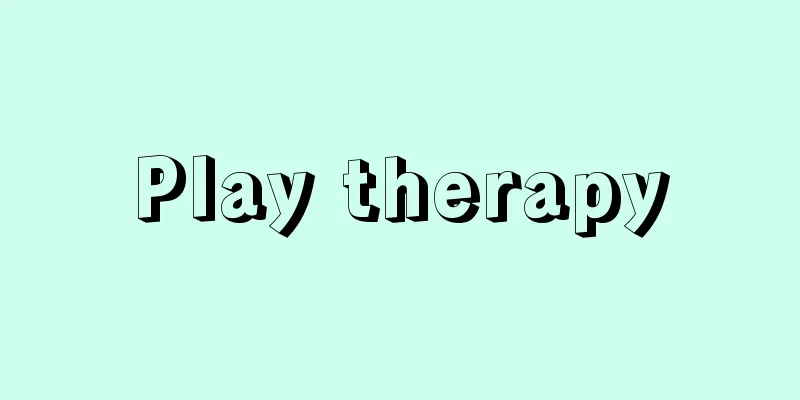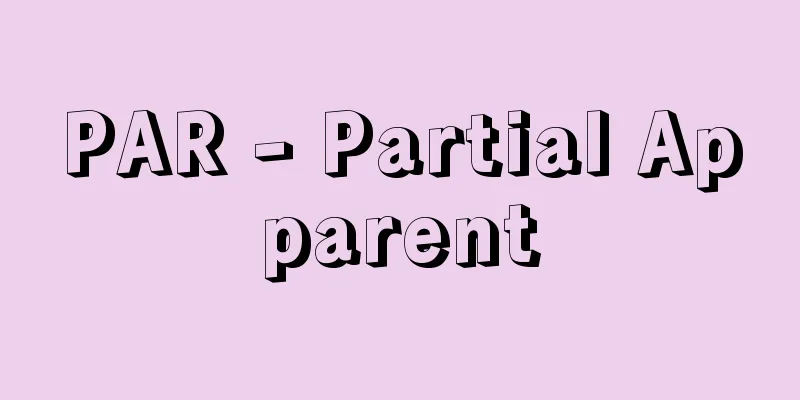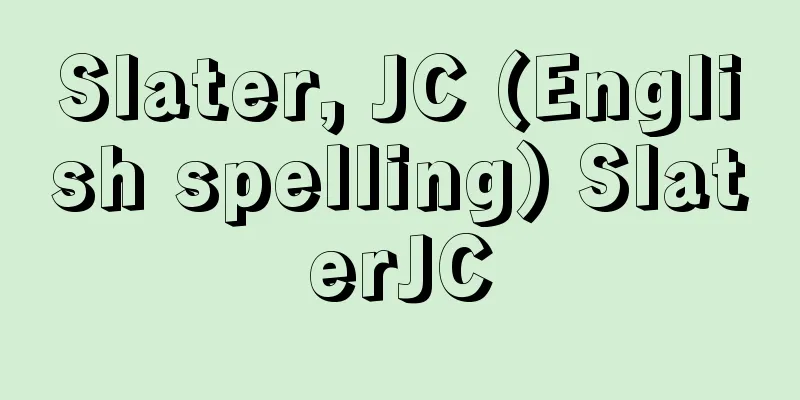Play therapy

|
Also called play therapy, this is a general term for psychotherapy that targets children through play. In play therapy, various behavioral and personality problems are resolved or development is promoted through communication and self-expression mediated by play. The supportive (therapeutic) interaction that takes place not only consciously but also unconsciously during play is a safe and useful support (treatment) method for children who cannot communicate adequately verbally. Play therapy is not a term given to a specific school of psychotherapy, but is a general term for psychotherapy that is carried out through play for children, as mentioned above. Therefore, various schools of psychotherapy carry out play therapy based on their own theories and support techniques. Historically, it began in the early 1900s with attempts to apply Freud's psychoanalysis to children, and Anna Freud, A. and Klein, M. conducted child psychoanalysis using play. In addition, following the trend of client-centered therapy, Axline, VM, who places emphasis on the child's ability to develop independently through the human relationship between the helper and the child through play, conducted child-centered play therapy (CCPT). The following eight principles for therapists proposed by Axline (1947) are considered to be the basic attitude of therapists who conduct play therapy, regardless of the various theoretical backgrounds or approaches. The eight principles can be summarized as follows: 1) Establish rapport (a relationship of trust in the therapeutic relationship), 2) Accept the child as he or she is, 3) Create an atmosphere in which the child can freely express himself or herself, 4) Reflect the child's feelings, 5) Hold the child responsible, 6) Let the child take the lead, 7) Recognize that treatment is a slow process, and 8) Set necessary limits. A supportive approach based on this kind of accepting attitude is often effective for psychosomatic problems and neurotic problems with large environmental causes, such as school refusal and psychosomatic disorders. On the other hand, while the accepting attitude advocated by Axline is the basic aspect of play therapy, children with developmental disorders such as autism, and mental disorders such as various obsessive-compulsive disorders and depression are also targeted for social skills acquisition through social skills training (SST) based on psychological assessments including developmental aspects, and active intervention in cognition and behavior through cognitive behavioral therapy is also used. Play therapy, which is mainly aimed at infants and children of early childhood, is often carried out in a space of a certain size equipped with toys, called a playroom. In this space, children can have a free and protected world where they feel safe and trustful, while being protected by a stable therapeutic relationship with their therapist and a stable framework of the time and space they are given. In this extraordinary therapeutic space, children can freely express themselves and learn interpersonal relationships through verbal communication with the therapist and non-verbal communication through toys and play, which promotes the child's innate ability to grow. Sandplay therapy may be performed as part of play therapy, and art therapy such as drawing (painting) therapy such as Squiggle (mutual scribbling) and landscape montage therapy, and collage therapy may be performed. However, for destructive or dangerous behavior, a framework is set for behavior. Such restrictions function as a protection that provides the child with safety and security. In addition, because the environment has a large influence on children, it is often important to adjust the environment in addition to approaches to the child himself. Therefore, in parallel with play therapy as a direct intervention for children, parent interviews with guardians or caregivers are often conducted. [Miho Takahashi] Latest Sources Psychology Encyclopedia Latest Psychology Encyclopedia About Information |
|
プレイセラピーplay therapyとも称される,遊びを通して行なう子どもを対象とする心理療法の総称。遊戯療法では,遊びを媒介にしたコミュニケーションや自己表現の中でさまざまな行動的,性格的な問題が解決され,あるいは発達が促進される。遊びの中で意識的のみならず無意識的な次元でなされる援助的(治療的)かかわりは,言語的なコミュニケーションが十分にできない子どもにとって,安全かつ有用な援助(治療)手段である。遊戯療法は心理療法の特定の学派による呼称ではなく,上述のように子どもに対して,遊びを通して行なわれる心理療法の総称である。したがってさまざまな学派が,各々の理論と援助技法に基づいた遊戯療法を行っている。歴史的には1900年代前半,フロイトFreud,S.の精神分析を子どもに適用しようとする試みから始まり,アンナ・フロイトFreud,A.やクラインKlein,M.は遊びを用いて児童心理分析を行なった。さらに,来談者中心療法の流れから,援助者と子どもの遊びを介した人間関係の中で生じる子どもの自己成長力を重視するアクスラインAxline,V.M.が子ども中心療法child-centered play therapy(CCPT)を行なった。 アクスライン(1947)が提唱した以下のセラピストの八つの原理は,さまざまな理論的背景やアプローチを超えて遊戯療法を行なうセラピストの基本的態度として重視されている。八つの原理の要約は,①ラポール(援助(治療)関係における信頼関係)を確立する,②子どもをあるがままに受け入れる,③自由に自己表現できる雰囲気にする,④子どもの気持ちを反射する,⑤子どもに責任をもたせる,⑥子どもに先導させる,⑦治療は緩慢な過程であることを認識する,⑧必要な制限を設ける,である。不登校,心身症などに見られる,心因性の問題や環境因が大きい神経症的な問題に対しては,このような受容的態度による支持的なアプローチが有効であることも多い。 一方で,アクスラインが提唱した受容的態度を遊戯療法の基礎的かかわりとしながらも,自閉症などの発達障害や,種々の強迫性障害,うつ病などの精神障害をもつ子どもたちを対象に,発達面を含む心理アセスメントをもとにした社会技能訓練法social skills training(SST)によるソーシャルスキルの獲得や,認知行動療法による認知や行動に対する積極的な介入も行なわれている。 主に乳幼児期から児童期の子どもを対象とする遊戯療法は,多くの場合,プレイルームとよばれる玩具を備えた一定の広さをもつ空間で実施される。その中で,子どもは担当のセラピストとの安定した援助(治療)的関係性や,自分に与えられた時間と空間という安定した枠組みに守られながら,安心感と信頼感のある自由にして守られた世界をもつことができる。このような非日常的な援助(治療)的空間の中で,子どもは治療者との言語的コミュニケーションや玩具や遊びなどを通した非言語的なコミュニケーションを通して,自由に自己表現し,対人関係を学ぶことによって,子どもが本来もつ自己成長力が促進される。遊戯療法の一環として箱庭療法が行なわれたり,スクイグルsquiggle(相互なぐり描き法)や風景構成法などの描画(絵画)療法やコラージュ療法などの芸術療法が行なわれることもある。ただし,破壊的な行動や危険な行動などについては行動の枠を設ける。このような制限は子どもの安全と安心を提供する守りとして機能する。また,子どもの場合は環境の影響が大きいため,子ども本人に対するアプローチだけでなく環境調整が重要となることが多い。したがって,子どもに対する直接的な介入としての遊戯療法に並行して,保護者や養育者の保護者面接(親面接)を行なうことも多い。 〔高橋 美保〕 出典 最新 心理学事典最新 心理学事典について 情報 |
Recommend
Species (English spelling)
In Taoism in the Six Dynasties, Sui and Tang dynas...
Latin Education - Latin Education
Latin was originally a local language of the ancie...
Archipelago - Tatsuokai (English spelling)
(1) The former name of the Aegean Sea, which stre...
Carpi, U.da (English spelling) CarpiUda
...A type of colored woodblock print in which two...
Kudzu cutter - Kudzu cutter
Kudzu starch is mixed with sugar and hot water, k...
Apoxyomenos - Apoxyomenos
…Scopas, a native of Paros, succeeded in expressi...
Shi-gu-wen (English: Shi-gu-wen)
Characters inscribed on a type of stone drum disco...
The Structure of "Iki" - The Structure of Iki
…Like “sui” and “tō”, it was a kind of aesthetic ...
Peiwen Yunfu - Peiwen Yunfu
A Chinese dictionary with 106 volumes (later revi...
Probability space
…The probability of the sum event A = A1 ∪ A2 ∪… ...
Le viandier (English spelling)
… [history] If we consider the appearance of the ...
Hiroyuki Miura
A historian who lived from the Meiji period to th...
Amyotrophic lateral sclerosis
(1) Amyotrophic lateral sclerosis (ALS) Definition...
Noma Peninsula
A small peninsula jutting out from the southweste...
Semelē (English spelling) Semele
…Zeus also fathered many children with mortal wom...









